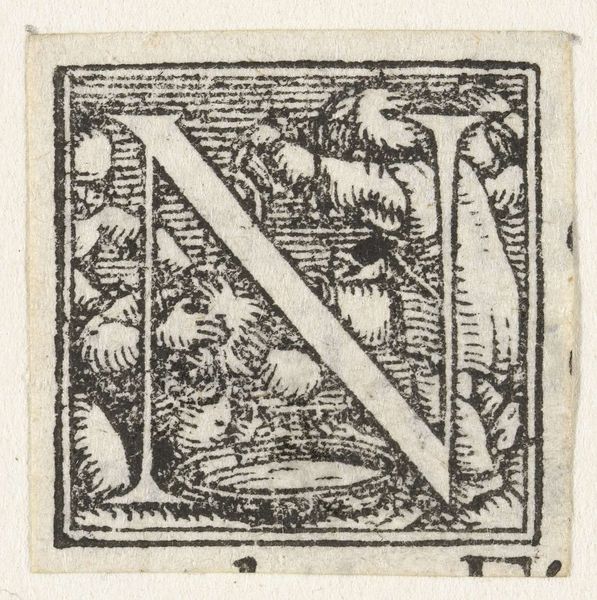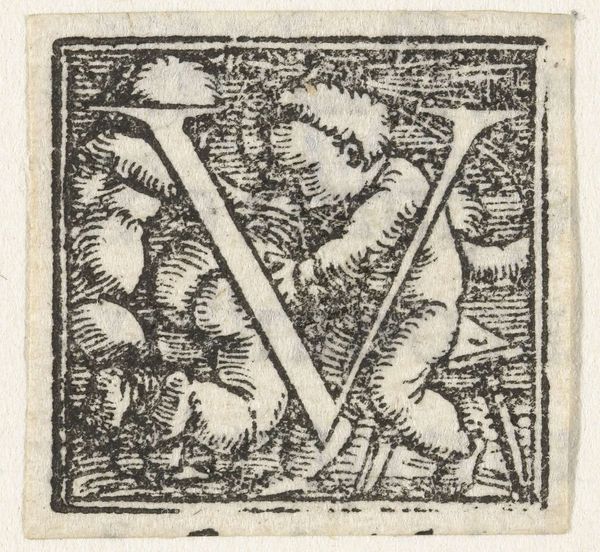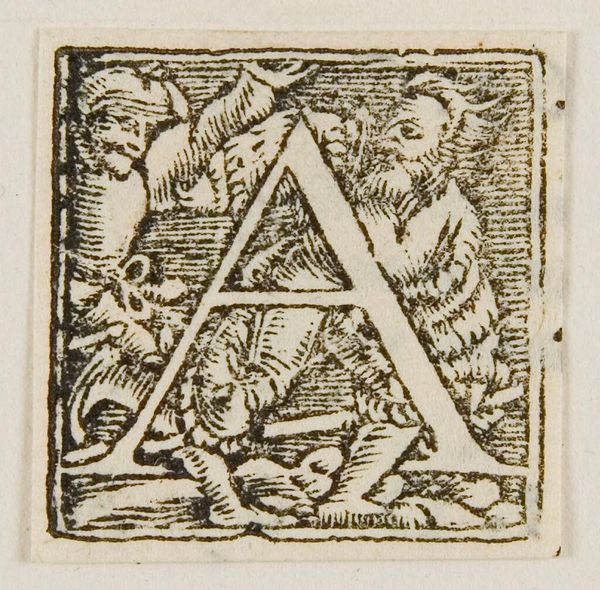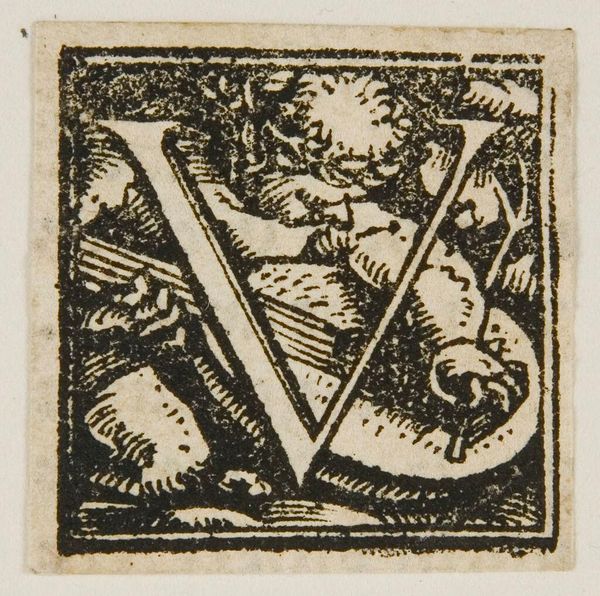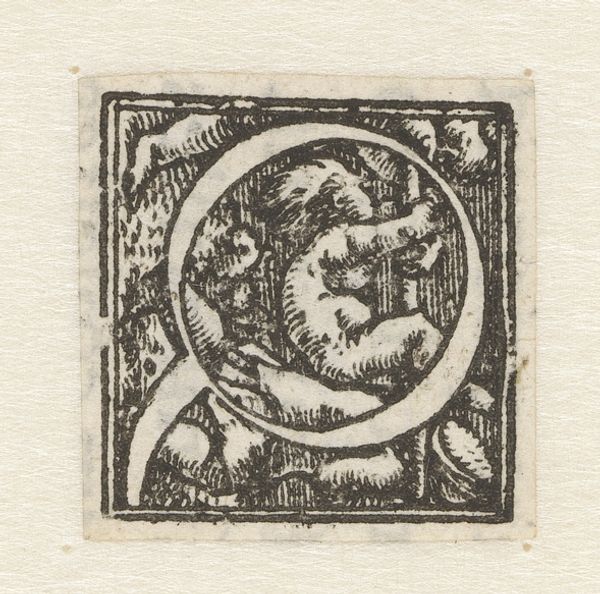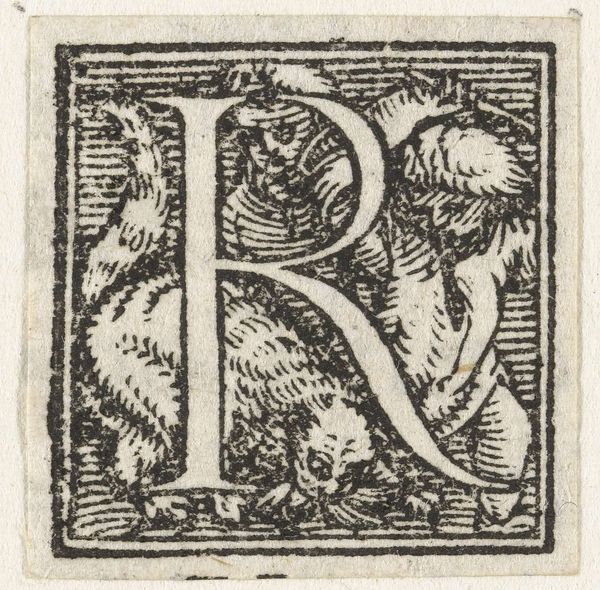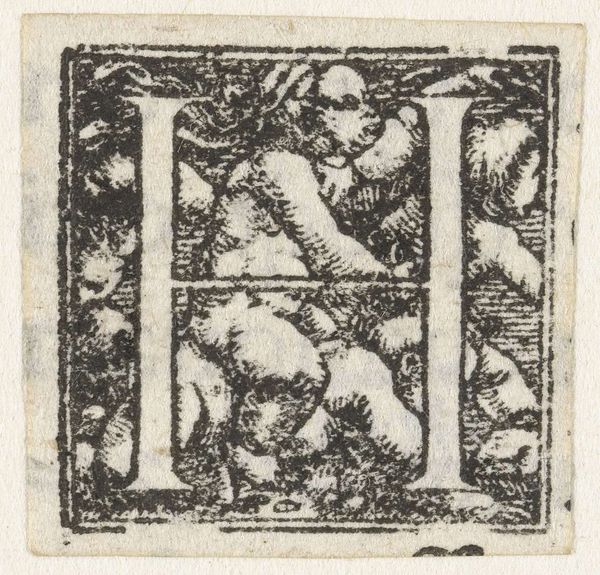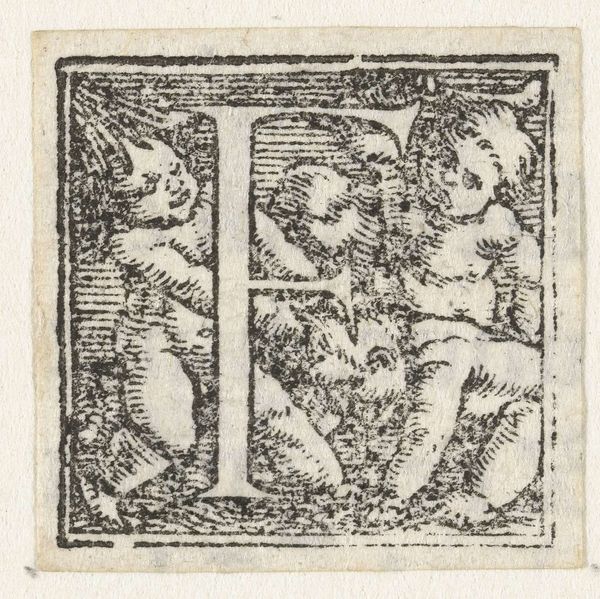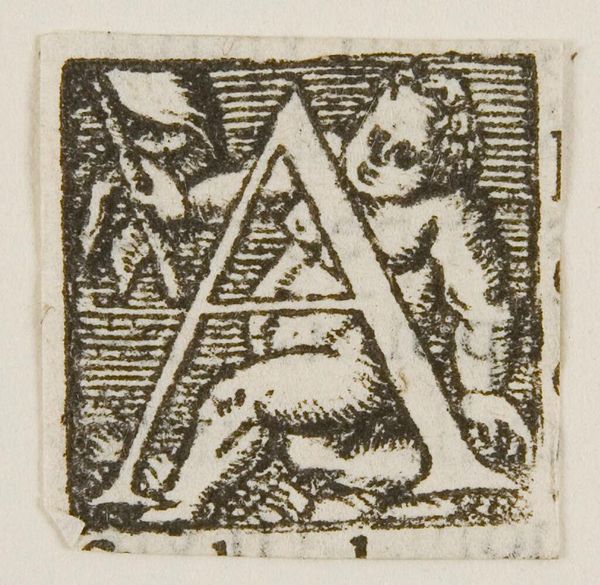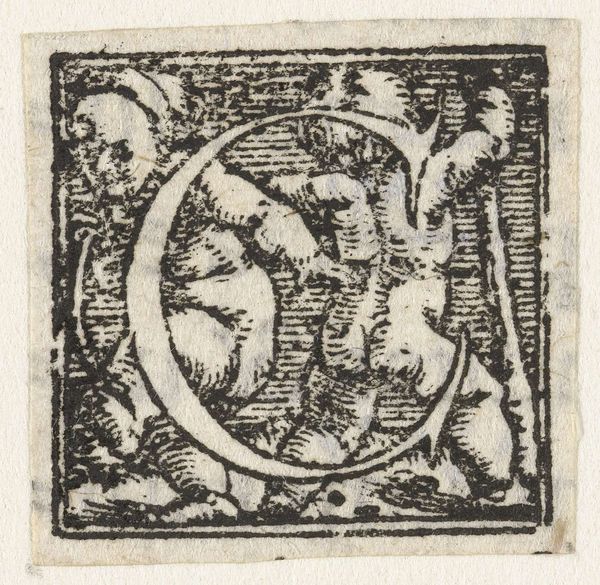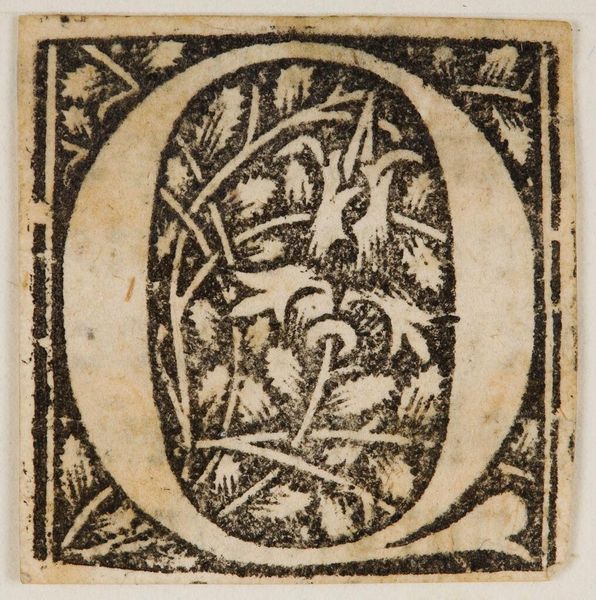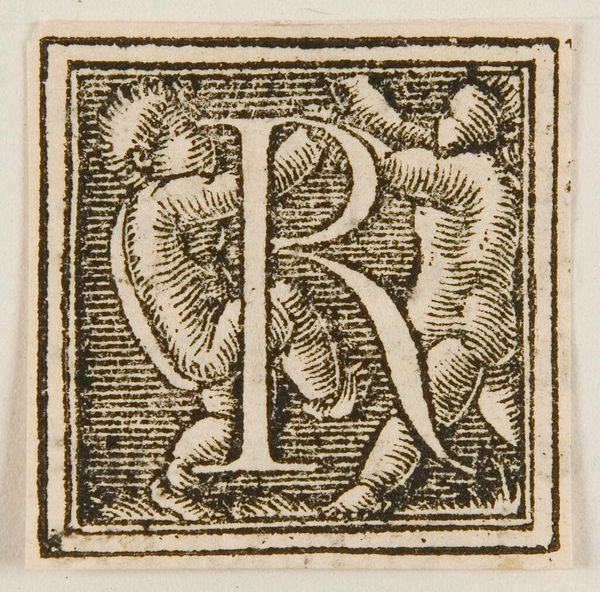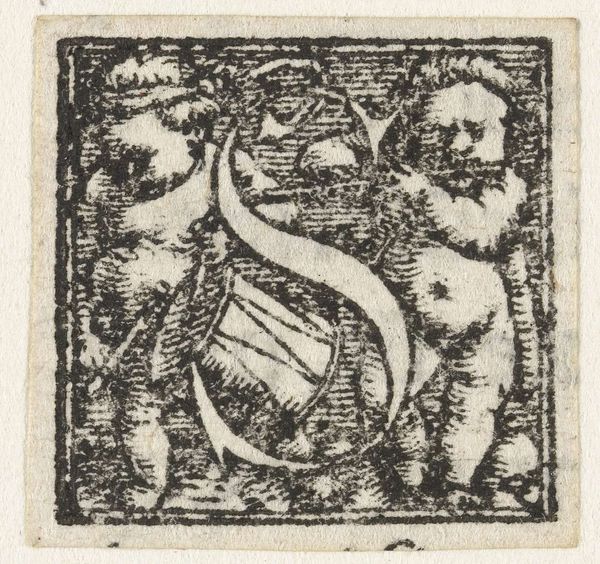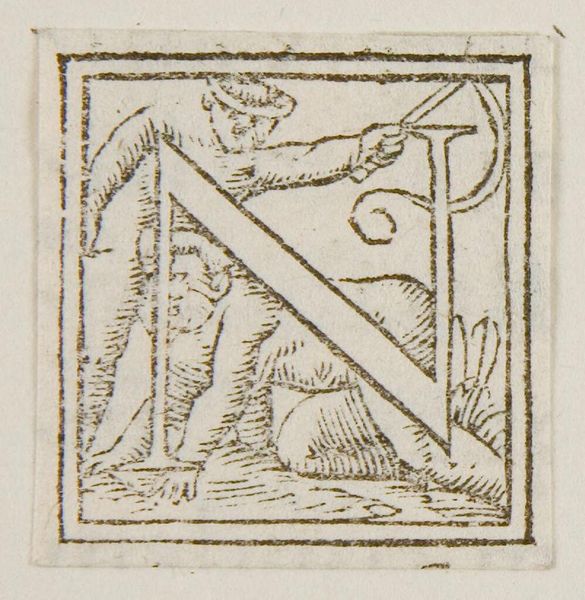
print, engraving
# print
#
figuration
#
11_renaissance
#
northern-renaissance
#
engraving
Dimensions: height 18 mm, width 18 mm
Copyright: Rijks Museum: Open Domain
Hans Holbein the Younger made this woodcut of the letter 'A' with two children sometime in the early 16th century. As a letterpress initial, this image represents the fusion of art and literacy that characterized the early modern period. Holbein was working in a world transformed by the printing press. The ability to mass-produce texts and images was reshaping social and intellectual life. Here, the artist uses a classical motif, putti or cherubic children, to decorate the void around the letter. These figures, borrowed from Italian Renaissance art, were emblems of youthful innocence. The small scale reminds us that images like this were meant to be multiplied and disseminated, becoming part of a larger cultural landscape. As art historians, our job is to reconstruct that landscape, looking at how images circulated, what meanings they conveyed, and what social functions they served. By studying these often-overlooked artifacts, we gain insight into the visual culture of the past.
Comments
No comments
Be the first to comment and join the conversation on the ultimate creative platform.
